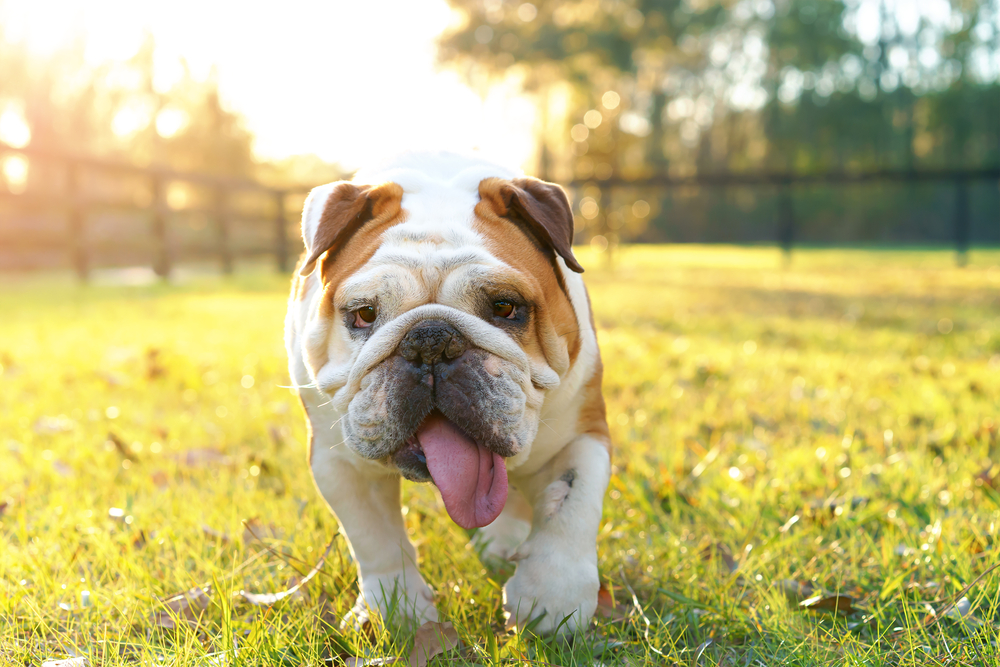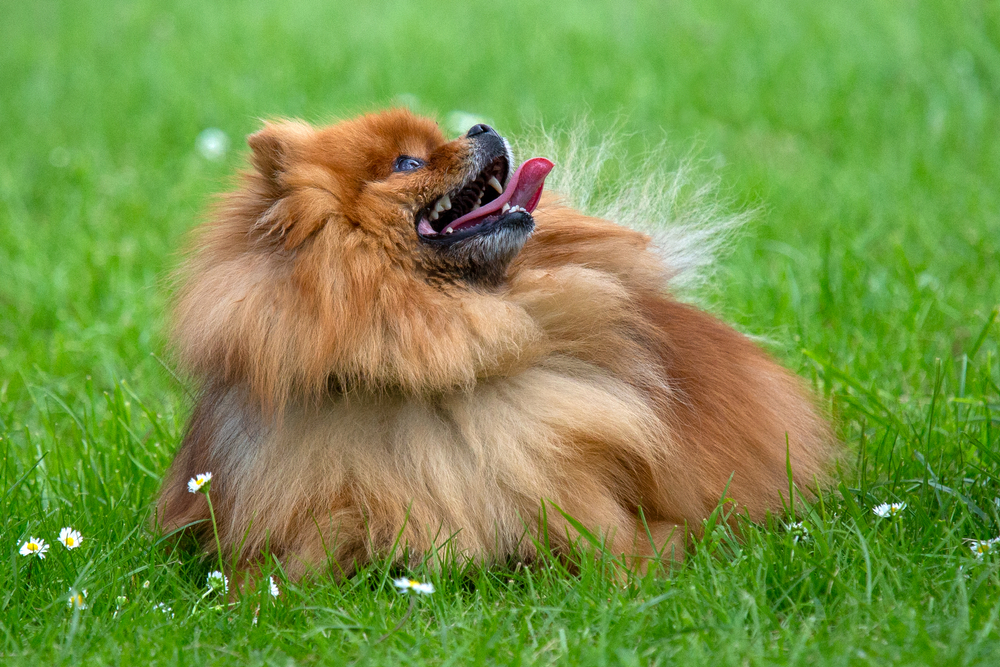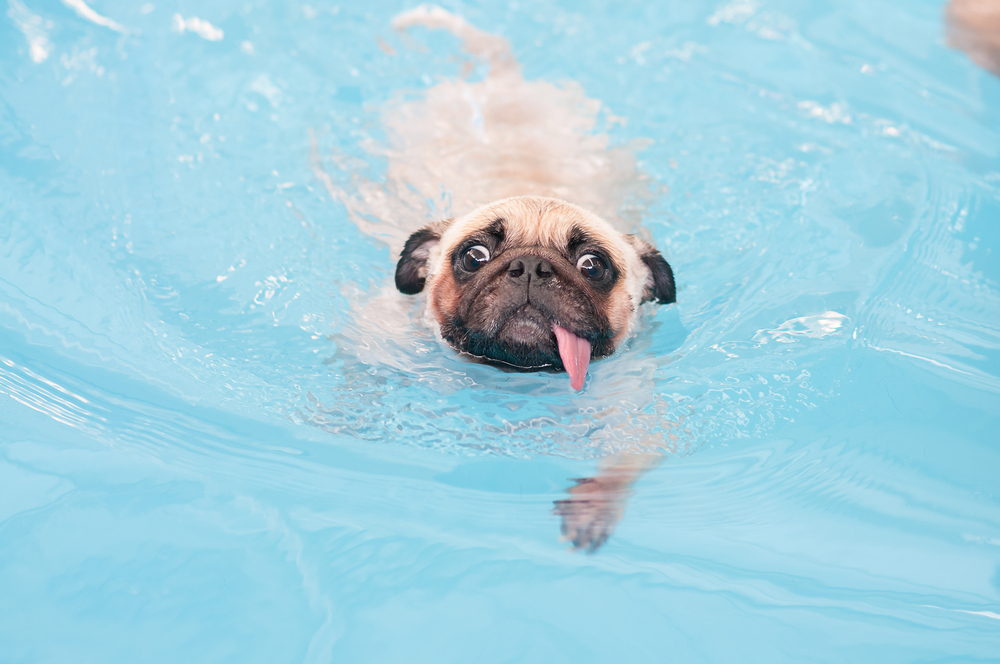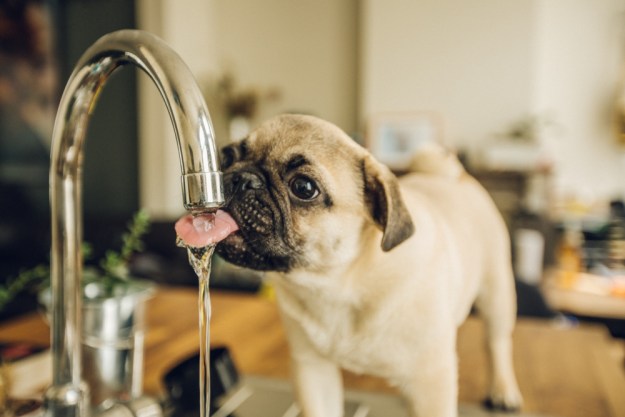
Ah, summer. Most of us think of vacations, lemonade, and fun at the nearest water park. The longer hours and sunny days tend to boost almost everyone’s mood, but the stifling temperatures and heavy humidity are not without their dangers. For pet parents, especially those with dogs, summer brings with it a potential complication: overheating. Have you ever wondered how to keep your dog from becoming overheated? We’ll walk you through easy steps to prevent overheating, warning signs a dog is overheated, what you can do for your dog at home, and when a trip to the vet is in order.
How hot is too hot?
As a general rule, if you think it’s too hot to sit outside, then it’s also too hot for your furry friends. According to Dr. Roger E. Adams, “Becoming overheated simply means your body cannot cool itself off or return to its normal optimal temperature.” In humans, the optimal temperature is 98.6 degrees Fahrenheit. For dogs — and cats — the optimal temperature ranges from 101 to 102.5 degrees Fahrenheit. Anything higher than 103 degrees is considered above normal, and if your dog’s temperature hits 104 degrees, it’s time to contact your vet. At 106 degrees, your dog is in danger of heatstroke, which can potentially cause his organs to shut down.
Spotting the warning signs
The most noticeable warning sign that your dog is overheating is excessive panting, but early warning signs can be more subtle. An ordinarily friendly dog may not want to be touched, or he may appear distracted when you speak to him. In severe cases, dogs may lose consciousness, convulse, suffer from vomiting and diarrhea, and the color of their gums or tongue may change.
According to the Humane Society, other symptoms include:
- A rapid heart rate
- Excessive drooling
- Fever
- Lack of coordination

If your dog is panting heavily, relocate him to a cool, shady area indoors and give him plenty of cool (not ice-cold) water to drink. In most cases, catching the early signs of overheating and immediately removing your dog from the heat can prevent an emergency trip to the veterinarian. However, you should continue to monitor your dog closely for any behavioral or physical changes such as lethargy, a glassy-eyed appearance, and ignoring you when you issue a command or call his name. If your dog continues to exhibit these symptoms after he’s been removed from the heat and given water, contact your vet for advice.
What are your dog’s risk factors?
While all dogs are at risk of overheating, some breeds have an increased risk. Young puppies, senior dogs, dogs with certain medical conditions, dogs with thick coats, overweight dogs, and flat-faced breeds are all more prone to overheating than other breeds. Hunting and working breeds are at risk from being too playful outdoors. Exertion can lead to overheating, particularly if you live in a humid area. Just as we can’t sweat and cool down in high humidity, dogs can’t pant effectively in muggy weather and remove moisture from their lungs. That moisture, and heat, get trapped in your pooch’s body if he doesn’t have adequate shade and hydration to counteract the humidity.
What to do if your dog is overheating
If your dog is exhibiting signs of overheating, immediately take the following steps to help him cool off.
- Bring your dog inside, or relocate him to a shady area with a fan, and give him plenty of water. Never force your dog to drink and refrain from giving him ice.
- Place a cool, damp towel over the back of your dog’s neck. This will help lower his body temperature faster without the risk of shock.
- If your dog is too lethargic to drink, take him to the vet immediately. However, if your dog is drinking normally, give him a chance to cool off. He may return to normal once he’s been out of the heat and had the chance to rehydrate.
- Sprinkle him with cool water from a hose. If your dog’s only symptom is panting, allow him a quick dip in the pool or lake if you have access to one.
- Check your dog’s temperature. The risk of heatstroke occurs when your dog’s temperature is between 103 and 106 degrees Fahrenheit.
If your dog’s temperature is normal, he should perk up and recover at home. If his temperature is above 103, we recommend contacting your vet. A temperature of 104 degrees or higher requires an immediate trip to the veterinarian.

The best cure is prevention
Dogs love to spend time outdoors, but our job as pet parents is to make sure they do so safely. Ensure they have constant access to water and give them a cool, shady area where they can sprawl out when it’s time for a rest. If you can’t bring your dog inside during the day, consider purchasing an outdoor fan, as this will help your pooch stay cool outdoors while you’re at work. Never leave your dog in a parked car, not even if you park in the shade and roll the windows down. Even on mild days, the temperature inside the car can reach well over 100 degrees in a short time, which can be fatal for dogs. No one likes being overheated. If you follow these tips, you can keep your dog cool and happy all summer long.
Editors' Recommendations
- Are ‘dog years’ really 7 human years? How to calculate your dog’s age
- How to tell if your older dog’s health decline means the end is near
- Xylitol is dangerous for dogs: 10 surprising products that contain it as a hidden ingredient
- Do puppies sleep a lot? These are the perfectly normal sleeping habits of a healthy pup
- How much water should your puppy drink in a day? Here are the factors to consider




